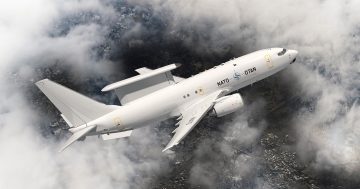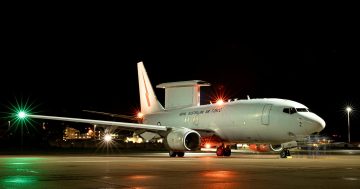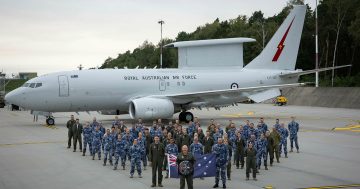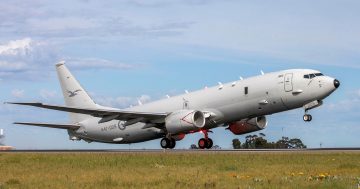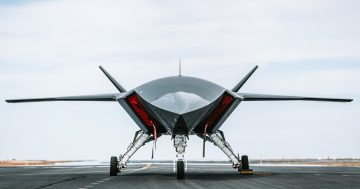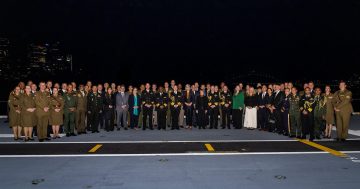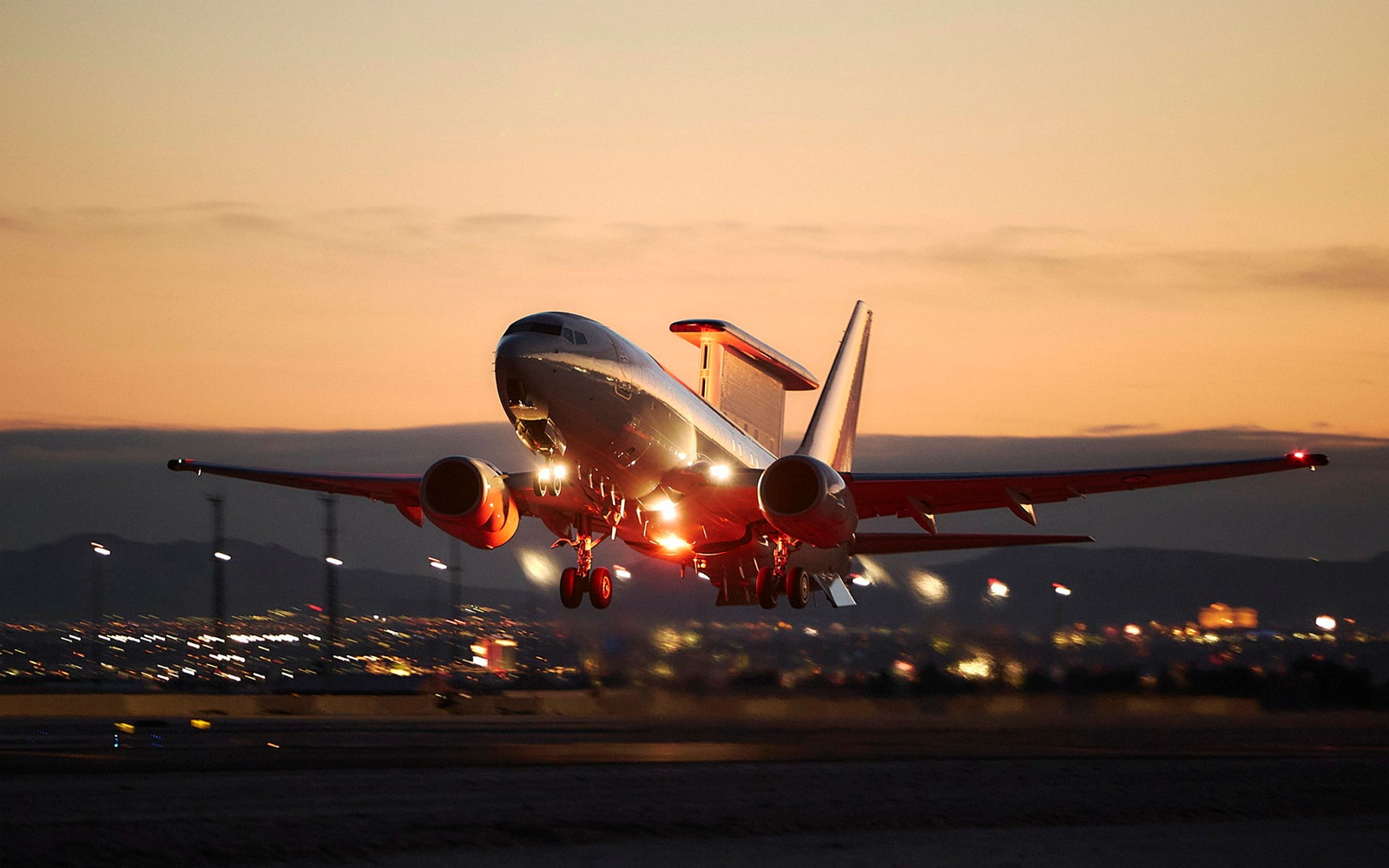
An RAAF E-7A Wedgetail takes off from Nellis AFB near Las Vegas during an exercise. Photo: ADF.
The US Department of Defense has cancelled its plans to buy the Boeing E-7A airborne early warning and control (AEW&C) aircraft in its 2026 budget proposal.
The USAF E-7A is a development of a similar aircraft that has been operated by the Royal Australian Air Force (RAAF), South Korea and Türkiye for 15 years. It has also been ordered by the UK and selected by NATO, and is widely considered to be the best of its type in operation anywhere.
The RAAF was the lead customer for the E-7A, and the aircraft’s name came from Australia’s Project AIR 5077 ‘’Wedgetail”. The first of six aircraft entered service with the RAAF in 2010 after several years of delays due to integration issues with the new radar and other systems, and the aircraft is currently the subject of several upgrade programs.
The USAF had previously said it would buy 26 E-7As to replace its ageing Boeing E-3C AWACS, most of which are approaching 50 years of service, and last year committed $US2.6bn ($A4bn) to fund two development aircraft.
However, the latest budget proposal has removed funding for the two prototypes as well as forward development and production funding due to development cost blowouts and concerns that large, crewed aircraft are no longer survivable in contested airspace.
“The department is cancelling the E-7 Wedgetail program due to significant delays with cost increases from $[US]588 million to $[US]724 million for aircraft and survivability concerns in this contested environment, while investing in alternative solutions, including space-based capabilities and adding E-2D aircraft,” a Pentagon spokesman told media on 2 July.
Instead, the Pentagon says it will focus on a space-based sensor program and acquire additional Northrop Grumman E-2D Hawkeye AEW&C aircraft, which are slower, lower-flying and generally less capable planes that are designed for use from aircraft carriers.
“We are bullish on space, and we think that’s a capability that can be achieved actually faster than the E-7 will deliver at this point,” the spokesman told DefenseNews.
The Wedgetail is based on Boeing’s commercial 737-700 airframe and features a large ‘’surfboard’’ multirole electronic scanned array (MESA) antenna on its rear fuselage. Instead of traditional AEW&C aircraft using a rotating radar, the MESA is a fixed array with thousands of nodes allowing it to simultaneously scan the airspace around the aircraft while also fixating on targets of interest.
The range of the MESA radar is classified, but is believed to exceed 400 km. The RAAF’s E-7A has been the AEW&C ‘’aircraft of choice’’ for recent multinational deployments in the Middle East and to eastern Europe in support of NATO’s mission to provide Ukraine with early warning of Russian aircraft and missile attacks.
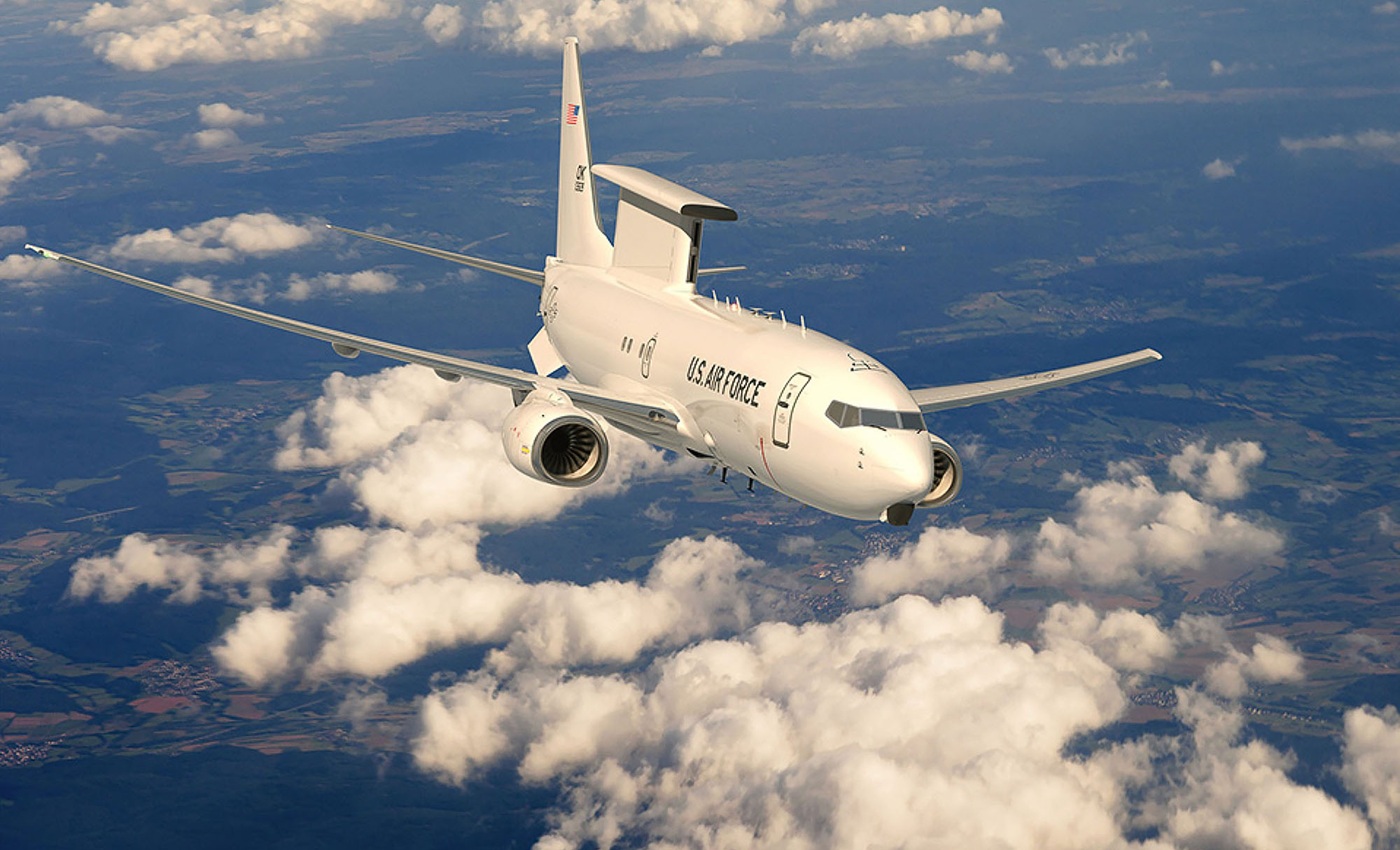
Concept art of a US Air Force E-7A. Image: Boeing.
In testimony on 10 June to the US House Appropriations Committee, US Defense Secretary Pete Hegseth said the E-7 was an example of a platform that was “not survivable in the modern battlefield”, and that “a great deal of ISR [intelligence, surveillance and reconnaissance] in the future will be space-based”.
“And not in a scientific, space-based ‘we hope we’ll get there’, but in a ‘we’re funding capabilities that will surpass some of those airborne capabilities’,” he said.
“So we’re willing to continue to review things like the E-7, but from our view, investments in existing systems that carry forward that capability, alongside even bigger investments in space-based ISR, gives us the kind of advantages we need on a future battlefield.”
But despite the funding cut, several former US senior officers, including six former air force chiefs of staff, have raised concerns that cancelling the E-7 program will leave a gap in the US’s ability to provide airborne command and control.
In a letter to House and Senate leadership, the former officers said the decision to abandon the E-7 and other budget measures, including reducing the number of F-35s to be procured, would undermine the US’s ability to deter its rivals.
“During a period of heightened tension throughout the world, we believe such reductions will severely and unnecessarily undermine our service members’ ability to deter, and if necessary, prevail in future conflicts,” they wrote.
“As the congressional defense authorization and appropriations committees continue their important work in preparing legislation for fiscal year 2026, we respectfully request the Congress provide authorization and funding to procure 75 F-35As and restore E-7 funding in full.”
They also questioned the decision to buy additional E-2Ds.
“The E-2 is unable to meet the combatant command requirements for theater-wide airborne command and control,” they said.
“That is not the mission for which it is designed. Additionally, the E-7 can perform missions different from traditional AWACS roles that will be critical to the China contingency.”


